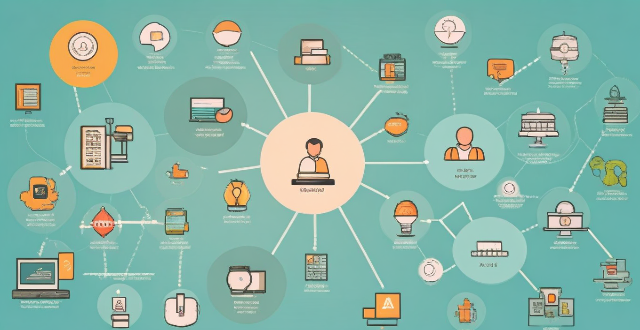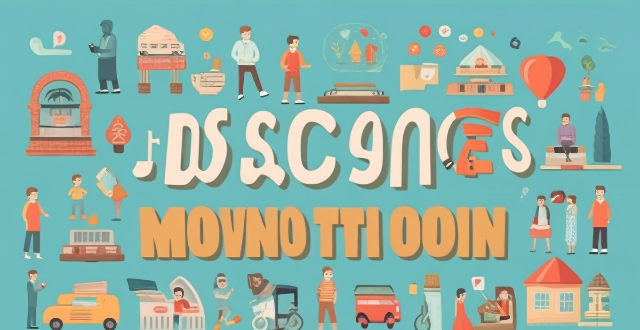Social Engineering

What is social engineering in the context of cybersecurity ?
Social engineering refers to the psychological manipulation of individuals or groups into divulging confidential information. This tactic is often employed by cybercriminals to gain access to sensitive data, systems, or networks without being detected. In the context of cybersecurity, social engineering is a significant threat that exploits human behavior rather than technical vulnerabilities. There are several types of social engineering attacks, including phishing attacks, pretexting, baiting, quid pro quo attacks, tailgating or piggybacking, vishing (voice phishing), and smishing (SMS phishing). To protect against social engineering attacks, organizations can implement education and awareness programs, policies and procedures, technology tools, and an incident response plan. By understanding the various types of social engineering attacks and implementing appropriate countermeasures, organizations can significantly reduce their risk of falling victim to these deceptive tactics.

How does social engineering pose a risk to communication security ?
The Risks of Social Engineering to Communication Security discusses the dangers of social engineering, a form of manipulation that tricks people into sharing confidential information. Social engineering is a significant threat to communication security because it can infiltrate trusted environments, manipulate human emotions, be difficult to detect, use a variety of attack vectors, lead to data breaches, and lack awareness and training. To protect against social engineering attacks, organizations must implement comprehensive security awareness programs, establish strict verification procedures for sensitive requests, and create a culture of security where employees are encouraged to report suspicious activities without fear of reprimand.

What are the potential risks and drawbacks of geoengineering ?
Geoengineering, also known as climate engineering, refers to the deliberate large-scale manipulation of the Earth's climate system to counteract the effects of global warming. While it is still a theoretical concept, there are potential risks and drawbacks associated with its implementation. One of the biggest concerns about geoengineering is that it may have unintended consequences that could be worse than the problem it was intended to solve. For example, injecting sulphate aerosols into the stratosphere to reflect sunlight back into space could potentially deplete the ozone layer, leading to increased exposure to harmful UV radiation. Another risk is that some forms of geoengineering may have irreversible effects on the environment. Once implemented, it may be difficult or impossible to reverse the changes made, even if the original goal was achieved. This could lead to long-term damage to ecosystems and biodiversity. Geoengineering raises important ethical questions about who has the right to make decisions about manipulating the planet's climate. There are concerns that wealthy nations might use geoengineering to protect their own interests at the expense of poorer countries that are more vulnerable to climate change impacts. If something goes wrong with a geoengineering project, who would be held accountable? Determining liability for any negative consequences of geoengineering would be complex and controversial, especially if multiple parties were involved in its development and implementation. Some proposed geoengineering techniques may not be scalable enough to have a significant impact on global temperatures. For instance, ocean fertilization, which involves adding iron or other nutrients to stimulate plankton growth and enhance carbon uptake by oceans, may only work in certain regions and not be effective globally. Implementing large-scale geoengineering projects would require significant financial resources and ongoing maintenance. The cost-effectiveness and sustainability of such projects over the long term are unknown and could prove prohibitive for many countries. The public perception of geoengineering is likely to vary widely depending on cultural, religious, and political beliefs. Some people may view it as a "quick fix" for climate change while others may see it as an unnatural interference with nature. This could lead to social conflict and opposition to its implementation. Given the global nature of climate change, any attempt at geoengineering would require international cooperation and coordination. However, reaching consensus among diverse nations with different priorities and interests could prove challenging and time-consuming.

What are the best practices for social media advertising ?
Best practices for social media advertising include defining goals, understanding the audience, choosing the right platform, creating compelling content, optimizing for mobile devices, testing and refining ads, monitoring budget, leveraging social proof, and staying up-to-date with platform changes. These strategies help achieve better results in terms of engagement, lead generation, and sales.

Can social media platforms be used to enhance social harmony ?
Can social media platforms be used to enhance social harmony? The text discusses the positive impact of social media on social harmony, including connectivity and communication, sharing information and ideas, and civic engagement and activism. However, it also highlights challenges and risks such as misinformation and fake news, online harassment and cyberbullying, and echo chambers and polarization. The conclusion states that social media platforms have the potential to enhance social harmony, but challenges must be addressed to ensure their positive impact.

What are the social implications of environmental degradation ?
The article discusses the social implications of environmental degradation, including health impacts such as air pollution and water pollution, economic impacts such as loss of biodiversity and job losses, social impacts such as displacement and cultural loss, and political impacts such as conflicts and refugees. It emphasizes the need for collective action to address these challenges and protect the natural environment for future generations.

How does social harmony impact economic development and stability ?
Social harmony is essential for economic development and stability, as it increases productivity, reduces conflict, improves governance, attracts foreign investment, and enhances social cohesion.

What are the social consequences of natural disasters caused by climate change ?
Natural disasters, intensified by climate change, have extensive social repercussions affecting health, economy, social order, education, and the environment. Immediate impacts include physical harm and mental distress, while long-term effects range from economic setbacks to environmental degradation. Addressing these consequences necessitates a multifaceted strategy encompassing emergency measures, recovery efforts, and sustainable development practices to foster community resilience.

What are the psychological effects of social media on teenagers ?
This article discusses the psychological effects of social media on teenagers, including increased anxiety and depression due to comparison with others' lives, fear of missing out (FOMO), cyberbullying, disrupted sleep patterns, decreased face-to-face interaction, body image issues, and cyberchondria. Parents and educators should monitor their children's social media usage and encourage healthy habits to help them navigate these challenges.

Can you provide examples of female-driven social enterprises that combine business with philanthropy ?
Female-driven social enterprises are combining business with philanthropy to create positive change in society, empowering marginalized individuals and promoting sustainability. Examples include Samasource, Prodigy Finance, Kiva, S'well, and Girlfriend Collective. These organizations demonstrate the power of women in driving social impact through sustainable business practices.

How should a woman respond to compliments in a social situation ?
The text is a topic summary on how women should respond to compliments in social situations. It suggests that they acknowledge the compliment, be sincere, optionally return the compliment, keep the conversation going, avoid being defensive, and maintain eye contact. The tips aim to help women navigate this aspect of social interactions effectively and leave a positive impression on others.

How does sports improve social skills ?
Sports significantly enhance social skills through teamwork, confidence-building, dealing with diversity, interpersonal development, and leadership. Participation fosters cooperation, communication, shared responsibility, achievement, resilience, public performance, acceptance, adaptability, respect, networking, empathy, conflict resolution, role assumption, motivation, and decision-making. These skills are transferable to various aspects of life, making sports a valuable platform for personal growth and social interaction.

Is there a difference between male and female social etiquette, and if so, what are they ?
The text explores the differences in social etiquette between men and women, highlighting key areas such as greetings, dress code, conversation topics, body language, emotional display, politeness, interaction with authority figures, and handling criticism. While there are traditional expectations for each gender, individual personality and cultural background significantly influence these behaviors. As societal norms change, distinctions in male and female social etiquette are becoming less defined, promoting greater flexibility and personal expression across genders.

Can team sports help with social anxiety ?
Team sports can potentially help individuals with social anxiety by providing a supportive environment for exposure therapy, building confidence, offering positive reinforcement, distracting from self-consciousness, and developing social skills. However, professional guidance should be sought if social anxiety significantly impacts one's life.

How has social media impacted public climate awareness ?
In this topic summary, we examine the multifaceted impact of social media on public climate awareness. We explore how social media amplifies climate conversations, facilitates education and awareness campaigns, spreads misinformation and echo chambers, and fosters community building and collaboration. While social media has increased visibility and accessibility of climate-related content, it also presents challenges such as misinformation and polarized discourse. To harness its full potential, promoting accurate information and constructive dialogue is crucial for driving action towards a more sustainable future.

Is geoengineering a viable solution to global warming ?
Geoengineering, also known as climate engineering or earth system management, refers to the intentional manipulation of the global climate on a large scale to counteract the effects of global warming and reduce the risks associated with climate change. While geoengineering has potential benefits such as mitigating climate change, providing faster responses compared to conventional methods, and being relatively inexpensive, it also comes with uncertainties regarding long-term effects, lack of international regulation and governance, and limited scope compared to other mitigation strategies. Therefore, geoengineering should not be seen as a substitute for conventional mitigation strategies but rather complement them. Extensive research and international cooperation are essential before implementing any large-scale geoengineering projects to ensure their safety and effectiveness in addressing climate change challenges.

How does social media influence consumer behavior ?
Social media has transformed consumer behavior by increasing brand awareness, influencing purchasing habits, and changing perceptions of brands. It enables consumers to compare products, share feedback, and engage with companies directly. Social media also plays a crucial role in product development by providing insights into consumer needs and preferences. Companies can foster customer loyalty through engagement and exclusive deals on these platforms. The rise of social commerce allows for direct purchases within apps and live streaming sales events. Personalization and targeted marketing, including influencer collaborations, further impact consumer choices. Overall, social media's influence on consumer behavior is significant and continues to evolve with technological advancements.

What are the key factors that contribute to social harmony ?
Social harmony is a state of peaceful coexistence and cooperation among individuals, groups, and communities within a society. Key factors contributing to social harmony include respect for diversity, communication and dialogue, education and awareness, equality and fairness, law and order, civic participation and volunteerism, and economic stability and prosperity. By promoting these factors, societies can create a more peaceful and cooperative environment where everyone can thrive.

What are the essential female social etiquette rules to follow ?
Essential female social etiquette rules to follow include dressing appropriately, being punctual, using good manners, being respectful, using proper table manners, being mindful of your body language, and showing gratitude. Following these rules can help women navigate social situations with ease and confidence.

What is social inclusion and why is it important ?
Social inclusion refers to the process of ensuring that all individuals can participate in all aspects of society. It aims to create a society where everyone feels valued, regardless of their background. Key elements include equal opportunities, non-discrimination, participation, empowerment, and solidarity. Social inclusion is important for promoting equity and fairness, enhancing economic growth, improving health and well-being, reducing poverty and exclusion, enhancing social cohesion, and supporting sustainable development.

What is Environmental, Social, and Governance (ESG) ?
Environmental, Social, and Governance (ESG) is a framework used by investors to assess the sustainability and ethical impact of companies in which they invest. It is a set of criteria that helps investors evaluate a company's performance in three key areas: environmental stewardship, social responsibility, and corporate governance. By considering these factors, investors can make informed decisions about where to allocate their capital and support companies that prioritize sustainable practices and positive societal impact. The environmental aspect focuses on reducing greenhouse gas emissions, conserving resources, and protecting biodiversity. The social aspect emphasizes diversity, inclusion, labor rights, and community involvement. The governance aspect focuses on board composition, risk management, and stakeholder engagement. Overall, ESG helps investors support companies that prioritize sustainable practices and positive societal impact.

What are some examples of successful corporate social responsibility programs ?
Successful Corporate Social Responsibility (CSR) programs benefit society and the environment, enhancing a company's reputation. Examples include Starbucks supporting coffee farmers, Coca-Cola providing clean water in Africa, Unilever reducing carbon emissions, Microsoft using AI for environmental solutions, Walmart reducing food waste, Google powering operations with renewable energy, Patagonia donating to environmental causes, and Johnson & Johnson raising funds through social media engagement. These programs not only make a positive impact but also strengthen relationships with stakeholders.

How does one's personal hygiene affect their social interactions ?
Personal hygiene is crucial for positive social interactions, boosting confidence, and maintaining good health. Good hygiene habits include regular bathing, teeth brushing, wearing clean clothes, hand washing, and taking care of skin and hair. Poor hygiene can lead to social isolation, misunderstandings, and health risks. Following simple tips can ensure that personal hygiene positively impacts social interactions.

How does sports contribute to social inclusion ?
Sports have the power to promote social inclusion by breaking down barriers, promoting teamwork, providing opportunities for participation, building confidence and self-esteem, and promoting health and wellbeing.

How does bullying affect the emotional and social development of adolescents ?
Bullying can have severe emotional and social effects on adolescents, including low self-esteem, depression and anxiety, difficulty making friends, trouble trusting others, aggression towards others, school avoidance, social withdrawal, problems with authority figures, substance abuse, and criminal behavior. It is important for parents, educators, and other adults to recognize the signs of bullying and take steps to prevent it from occurring in order to ensure that adolescents grow up to be healthy, well-adjusted adults.

How has social media impacted the entertainment industry ?
The text discusses the impact of social media on the entertainment industry. It mentions that social media has increased accessibility to content, changed content creation, made it possible for audiences to interact with creators, become a crucial tool for marketing and promotion, and created new revenue streams. The text concludes that social media has had a profound impact on the industry and will continue to shape its future.

How does educational equity relate to social justice ?
Educational equity and social justice are interconnected concepts that aim to create a fair and just society. Educational equity involves providing equal opportunities for learning and addressing disparities in resources, funding, and support services between schools or communities. Social justice encompasses policies and practices that ensure everyone has equal rights, opportunities, and access to resources while eliminating discrimination based on various factors. The relationship between educational equity and social justice includes addressing systemic inequalities within the education system, providing access to quality education for all students, promoting diversity and inclusion, and empowering students to become agents of change in their communities. By achieving educational equity, we can work towards creating a more just and equitable society.

How has social media influenced environmental awareness campaigns ?
The text discusses how social media has revolutionized communication and information sharing, particularly in the context of environmental awareness campaigns. It outlines various ways in which social media has impacted these campaigns, including increased visibility, interactivity, accessibility, influence of celebrities and influencers, real-time updates, and crowdsourcing and fundraising opportunities. The text concludes that social media is an essential tool for promoting environmental causes and will likely continue to play a significant role in shaping our understanding of the environment and inspiring action.